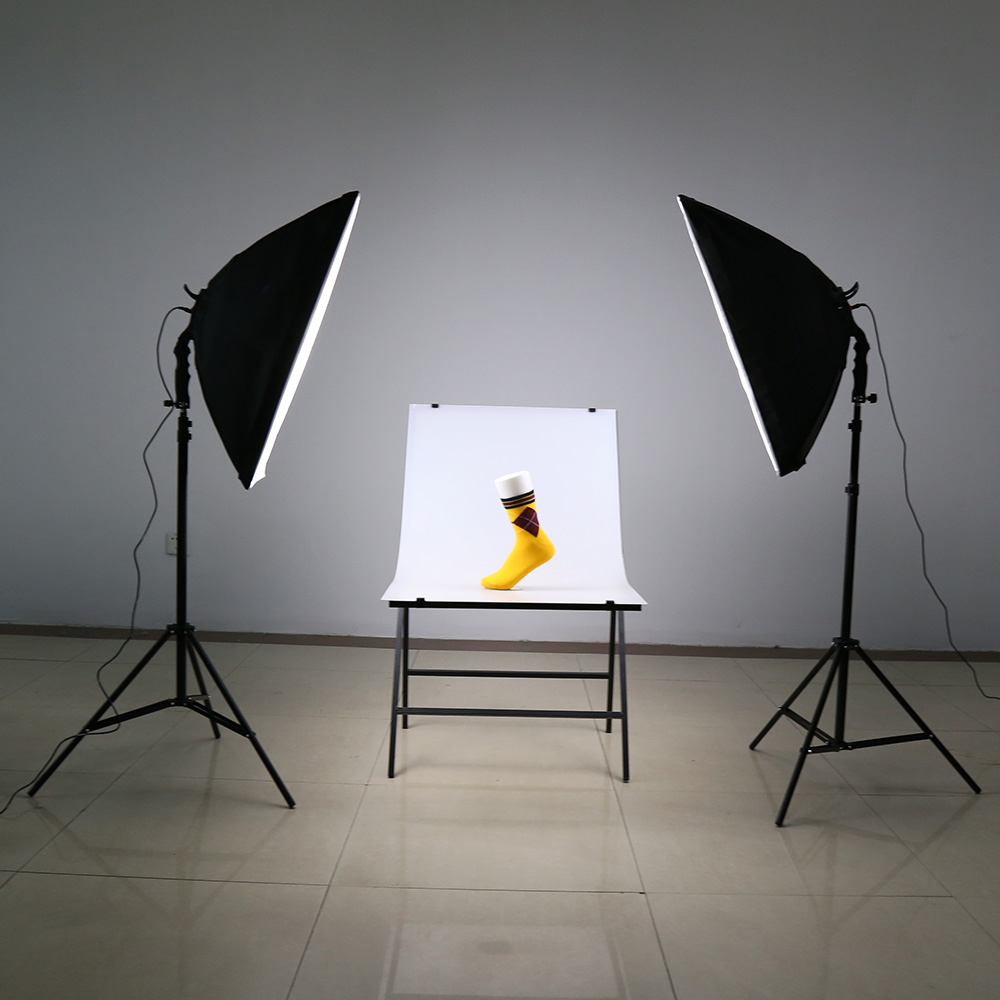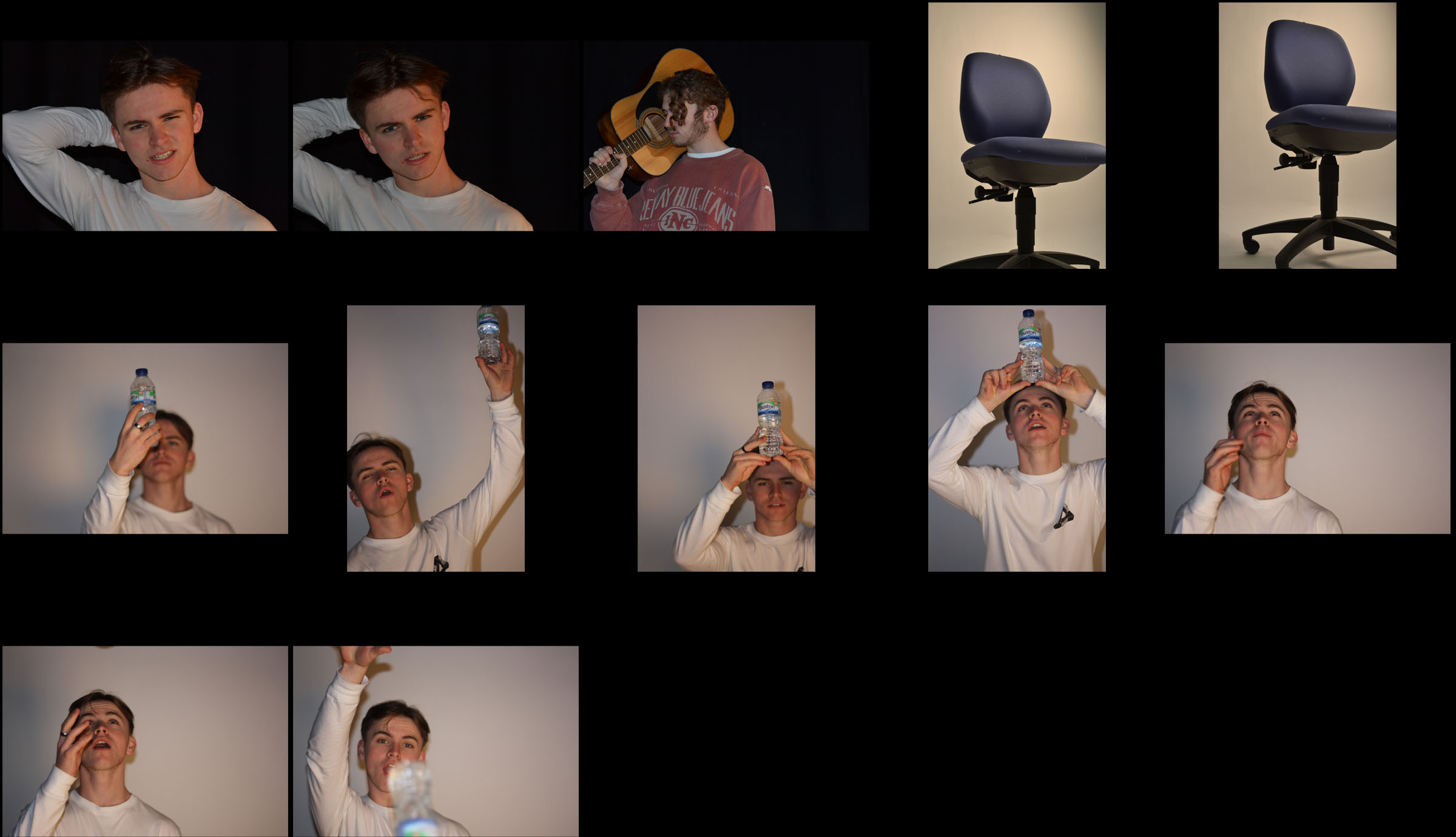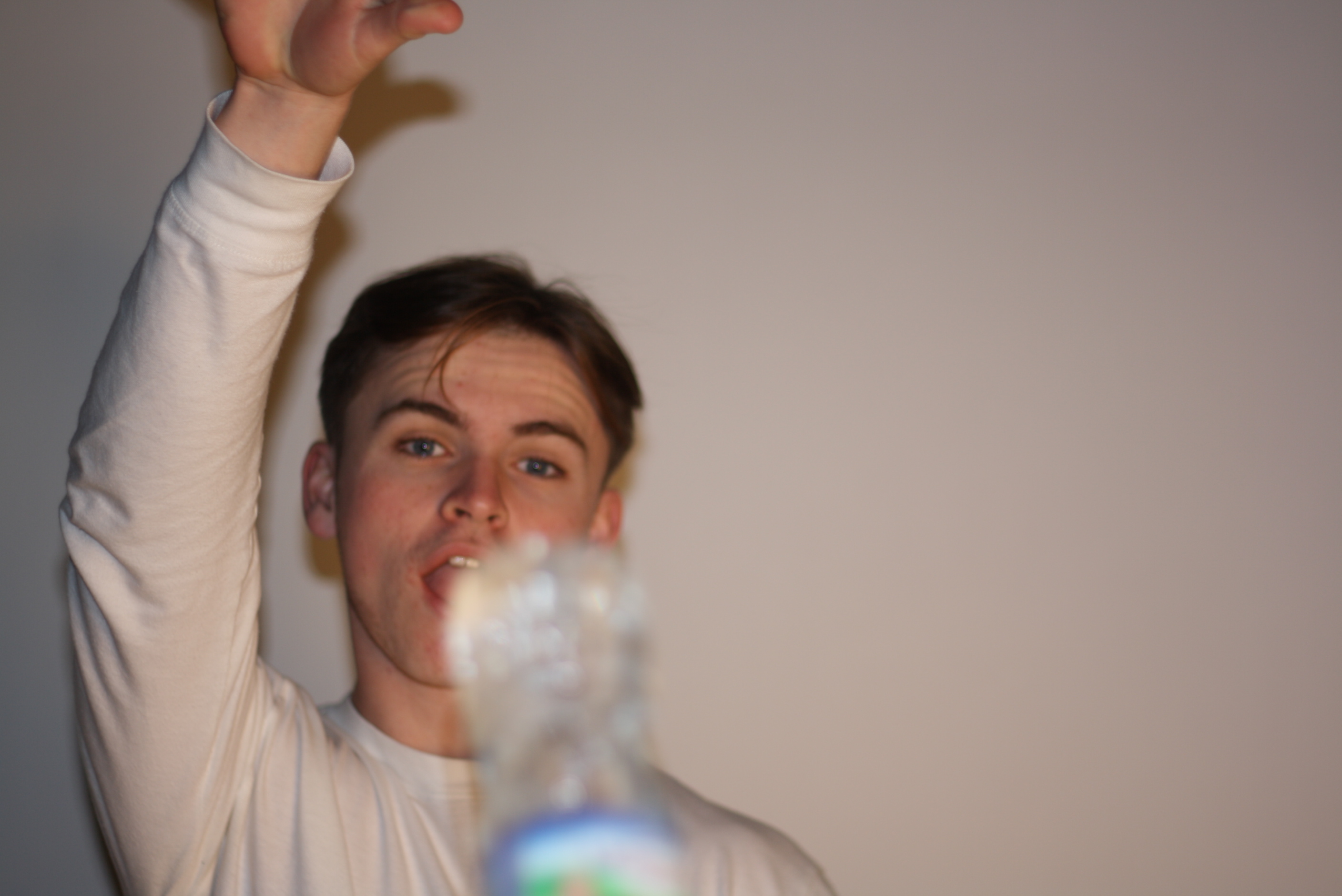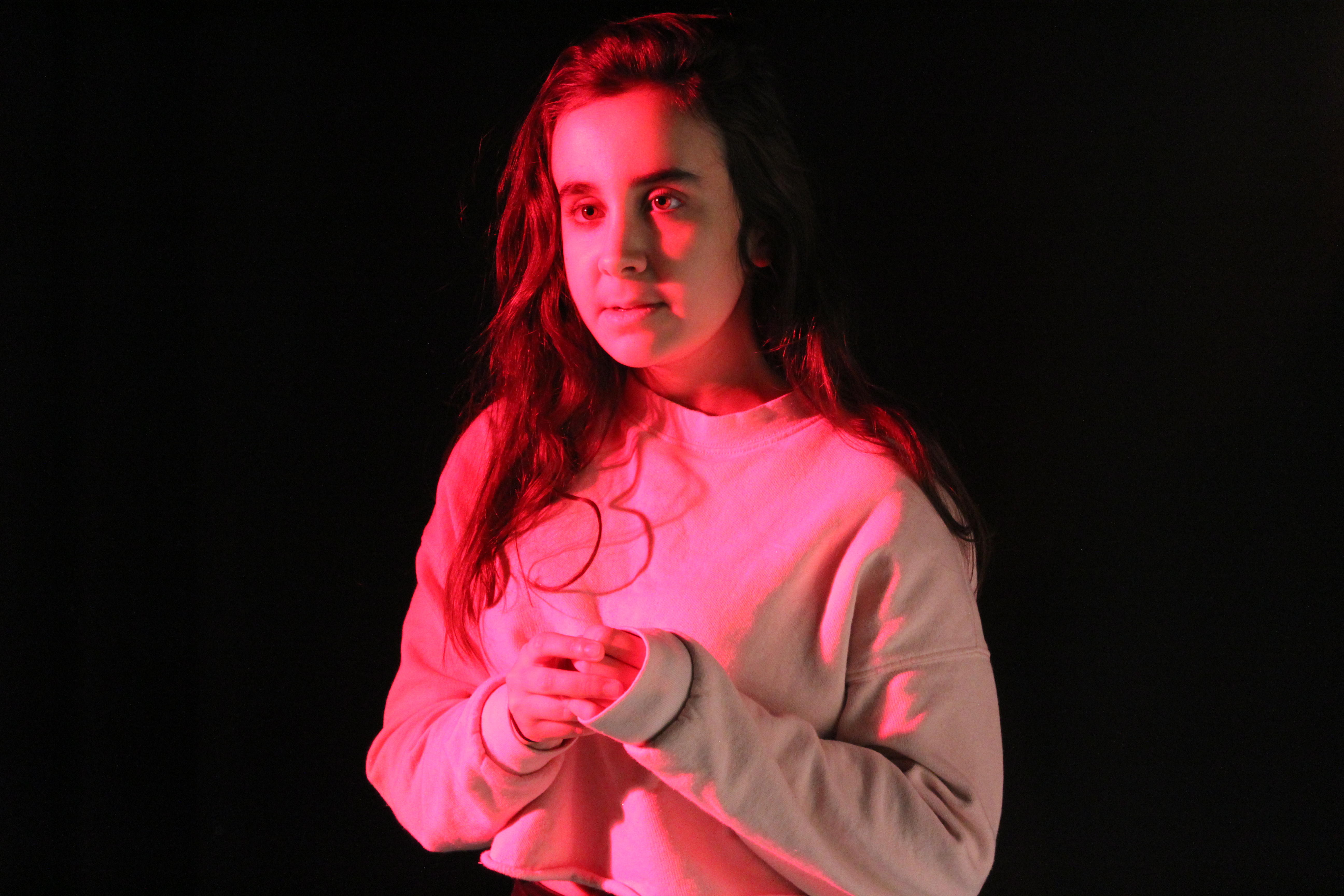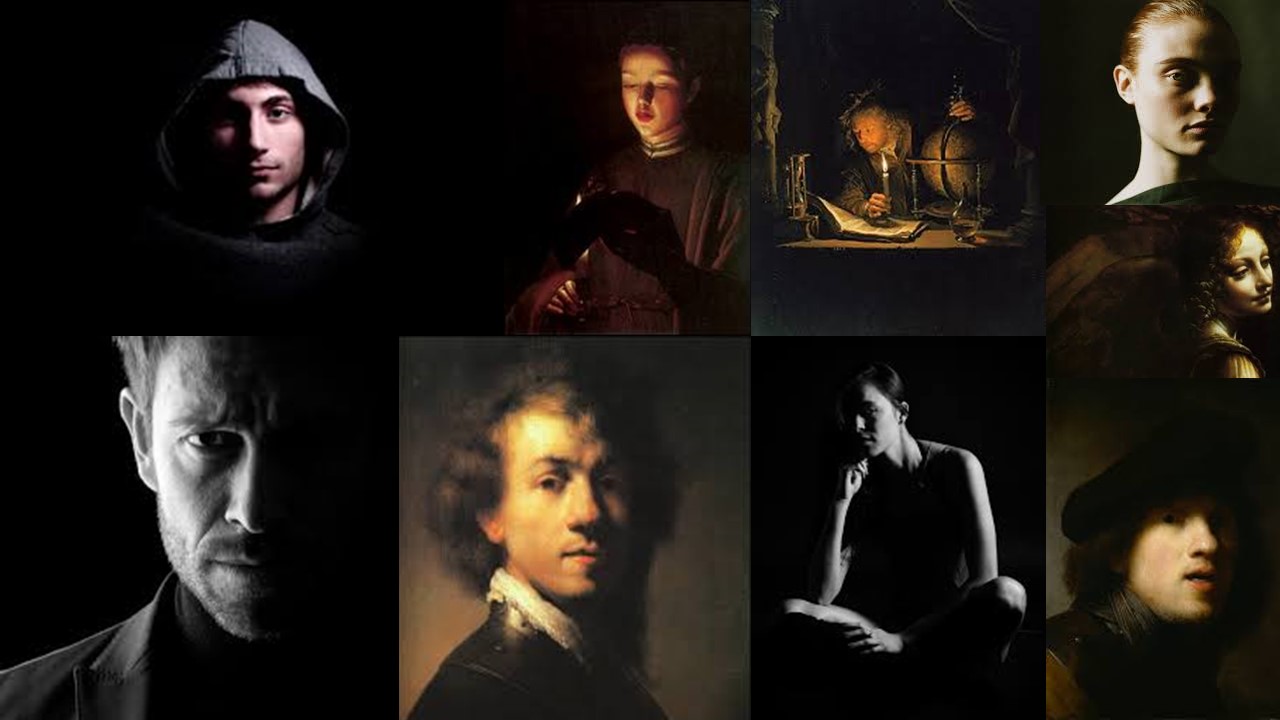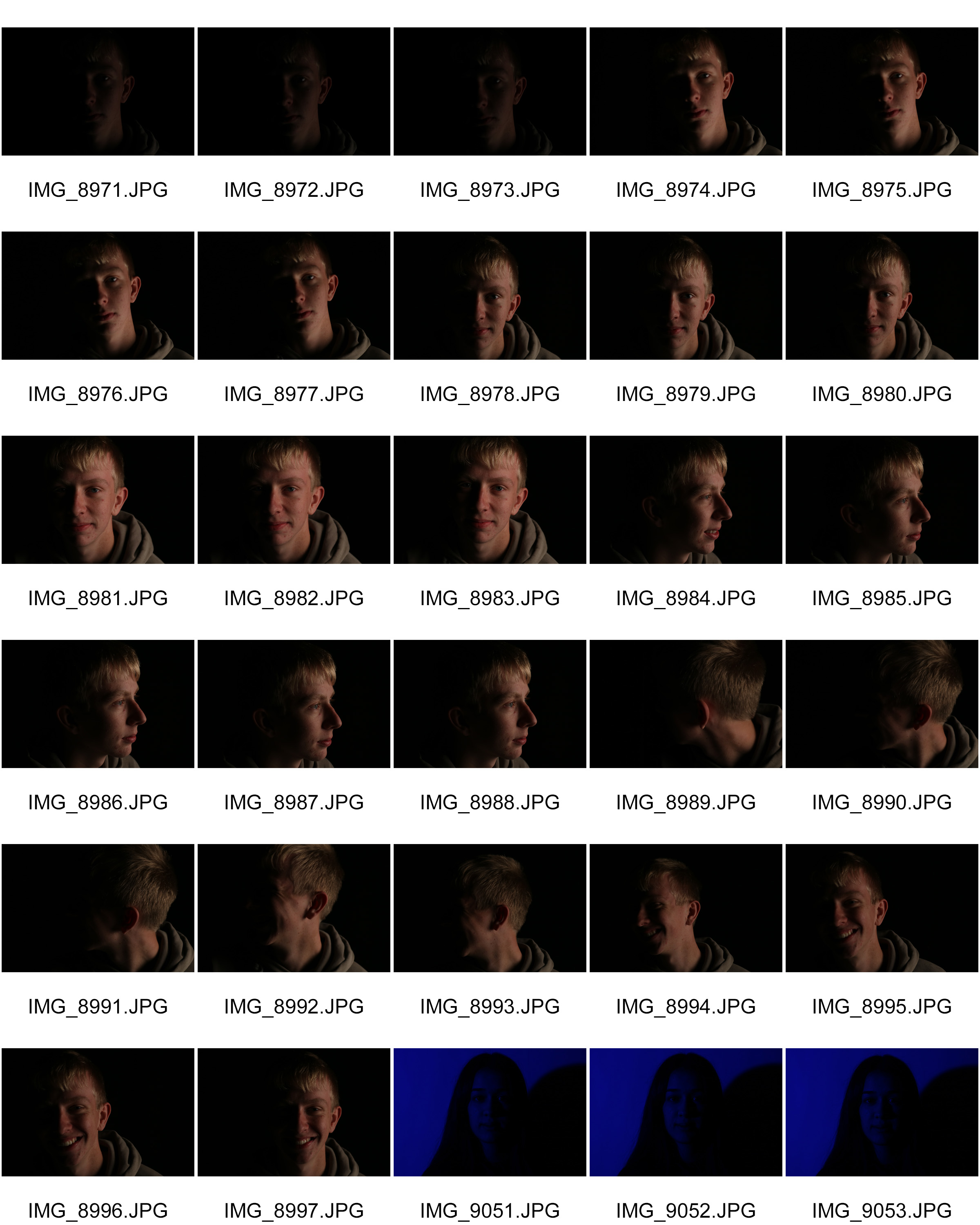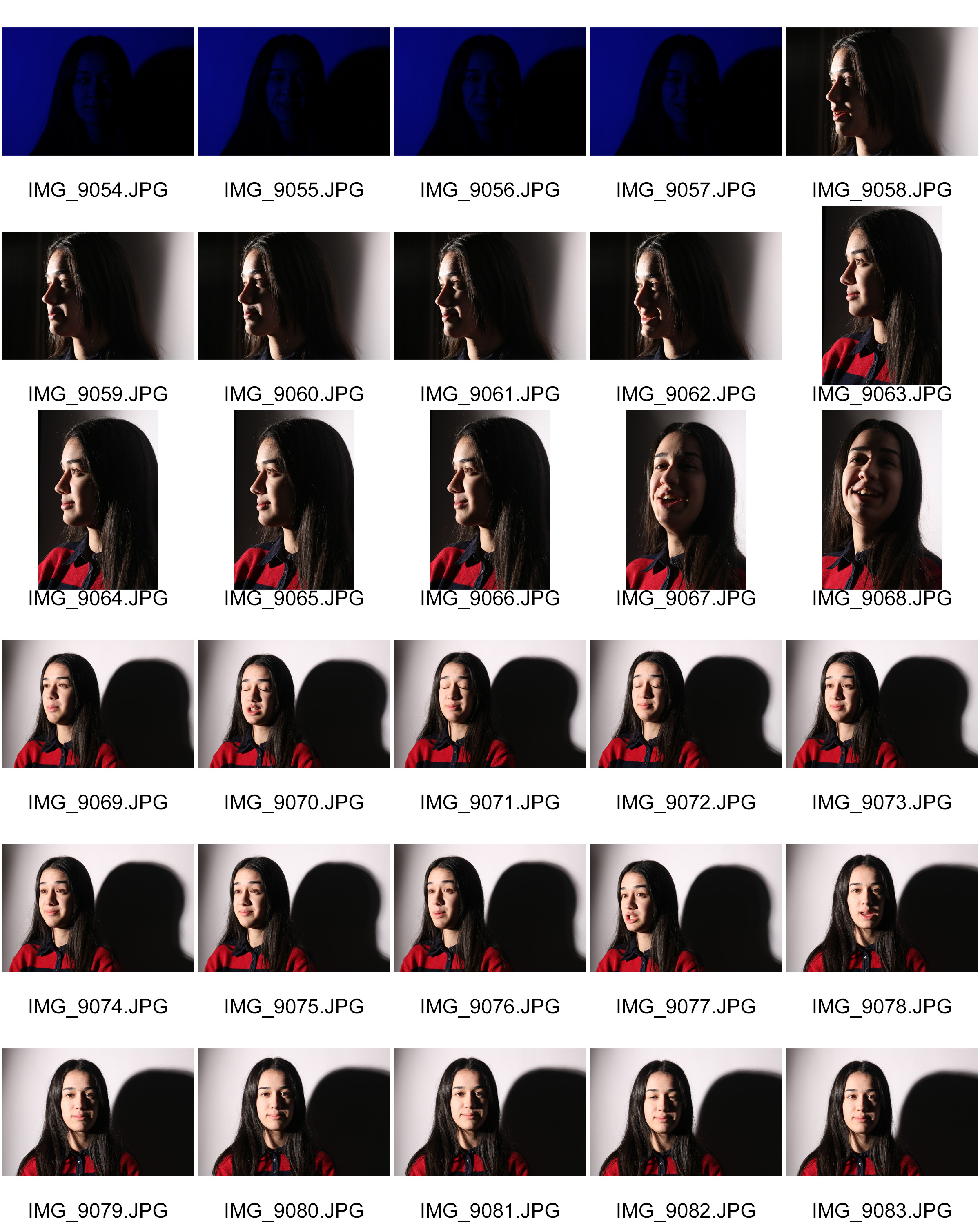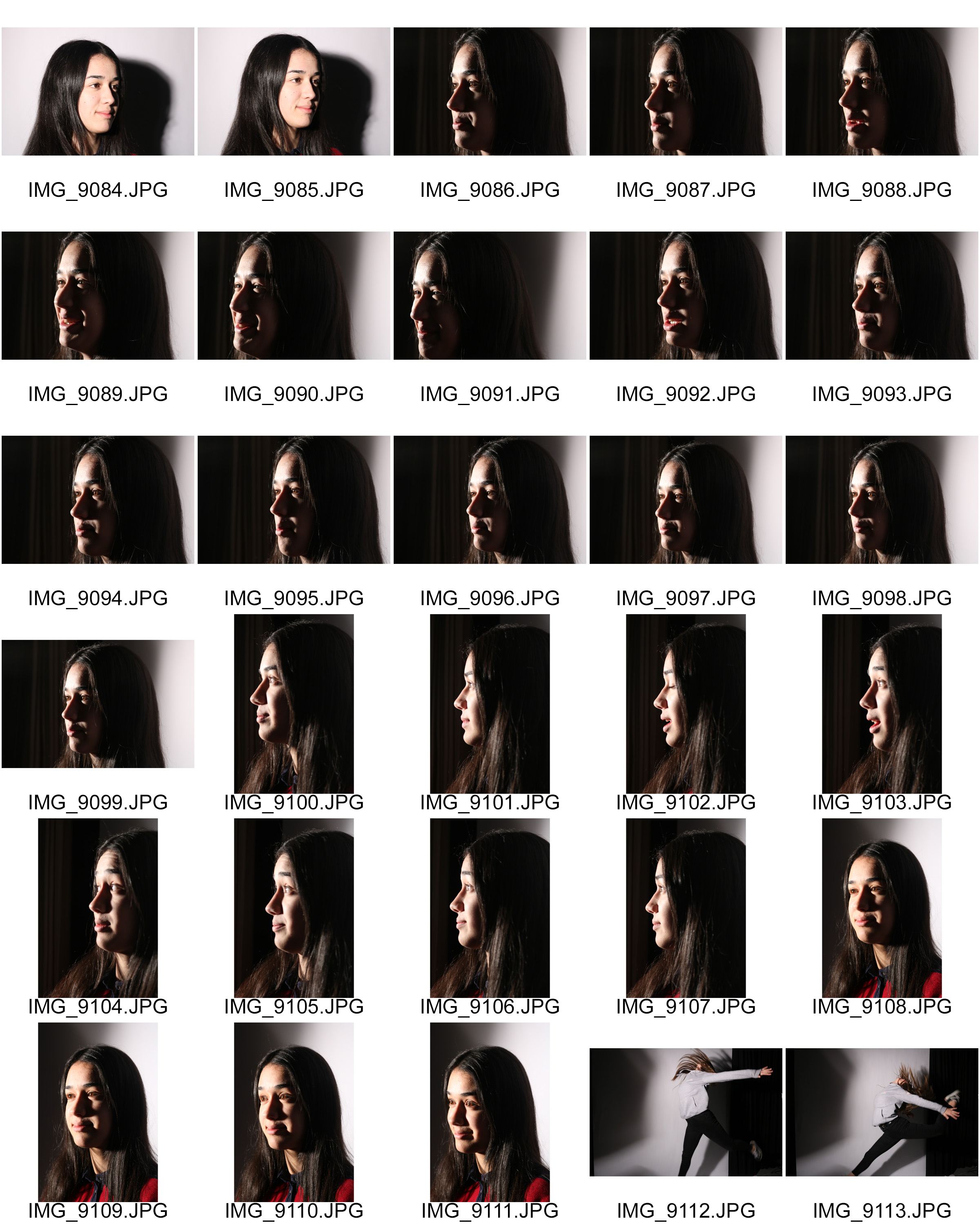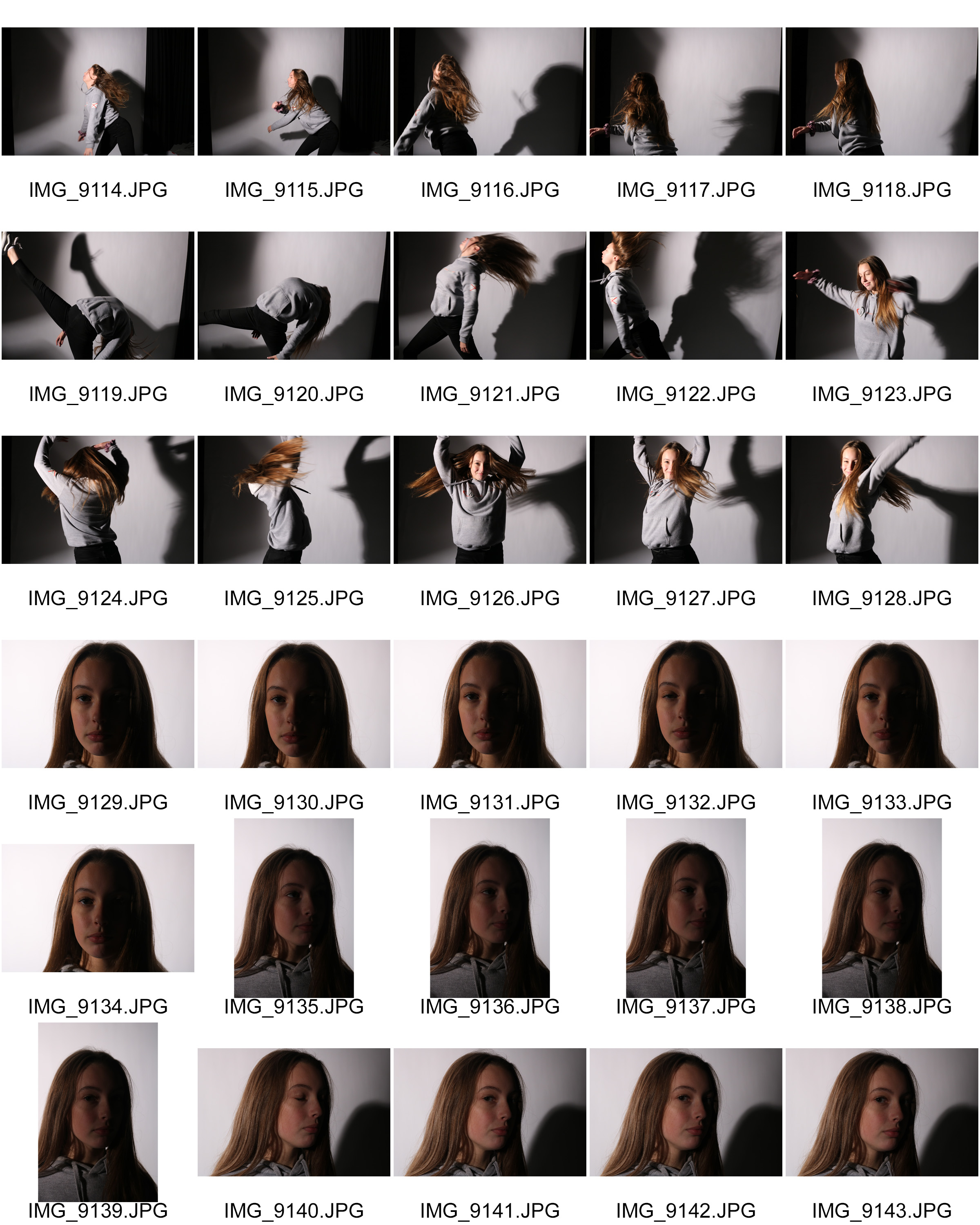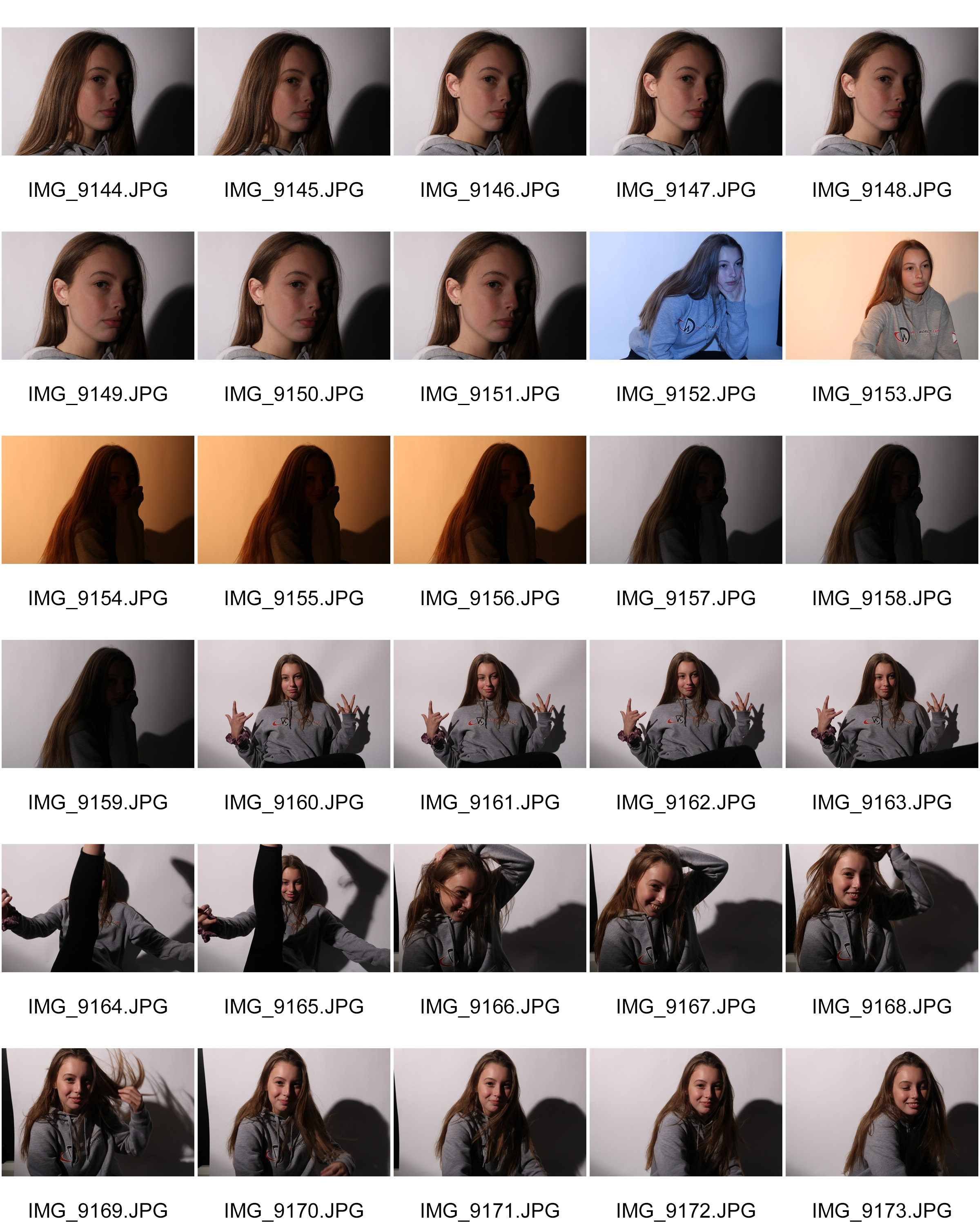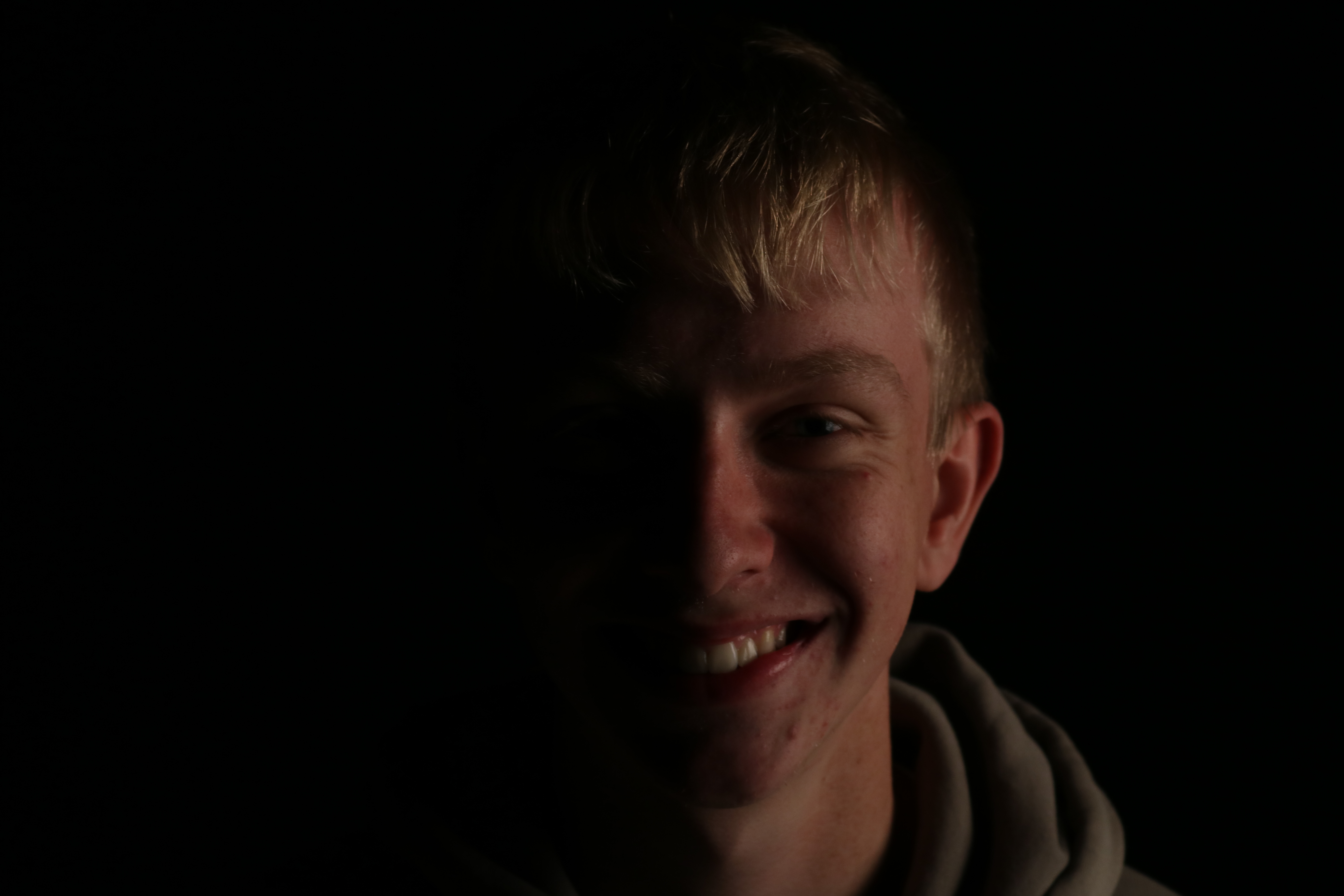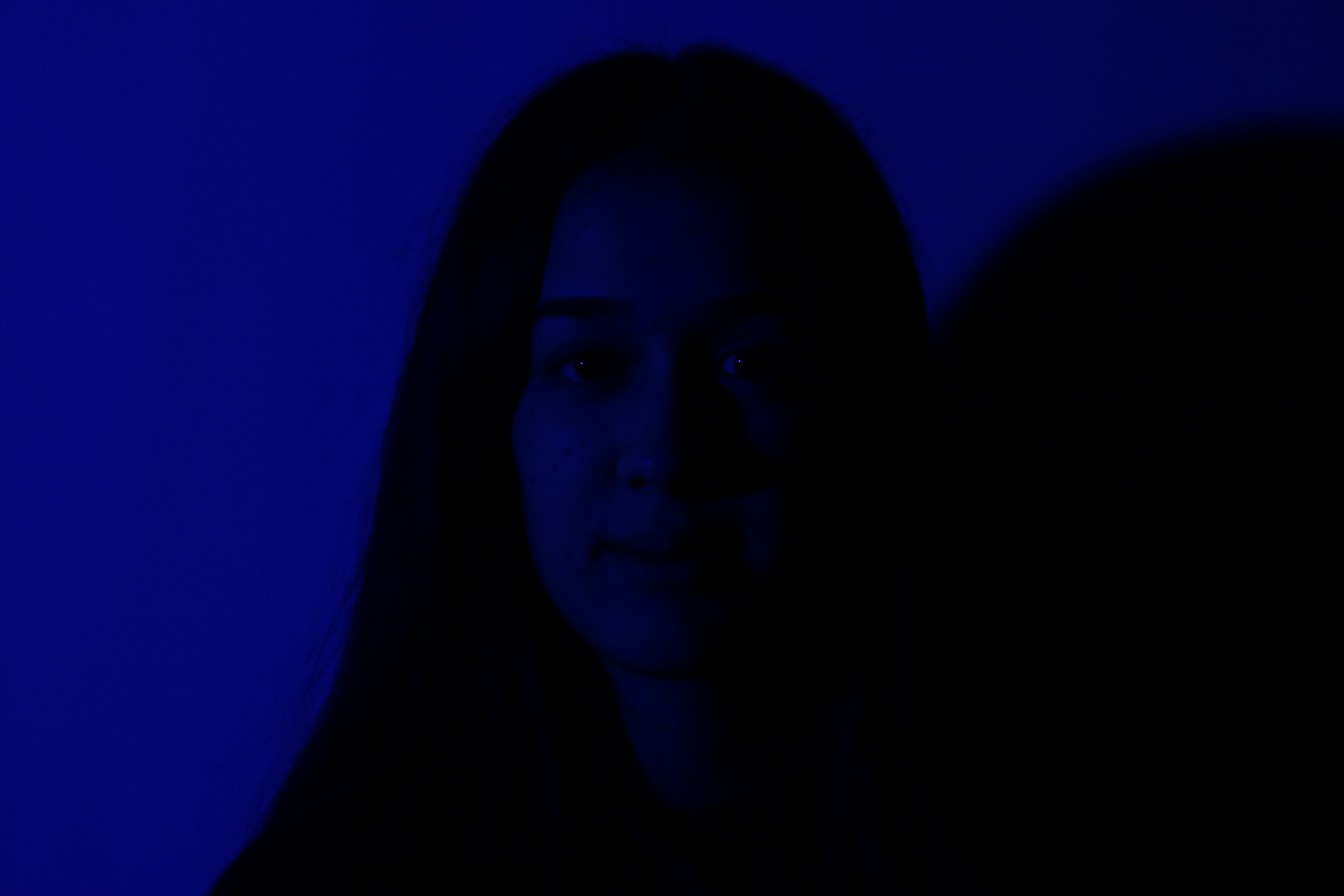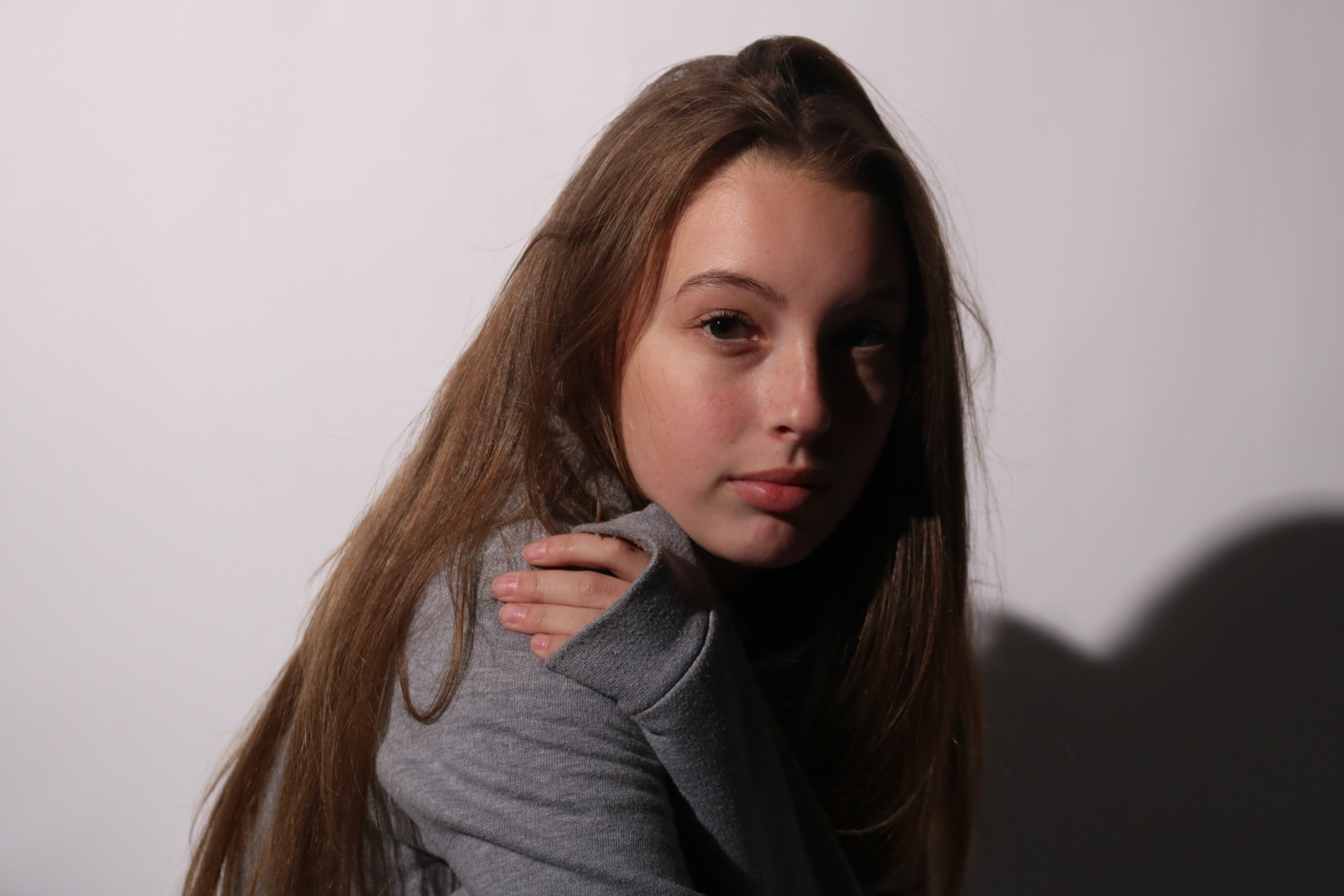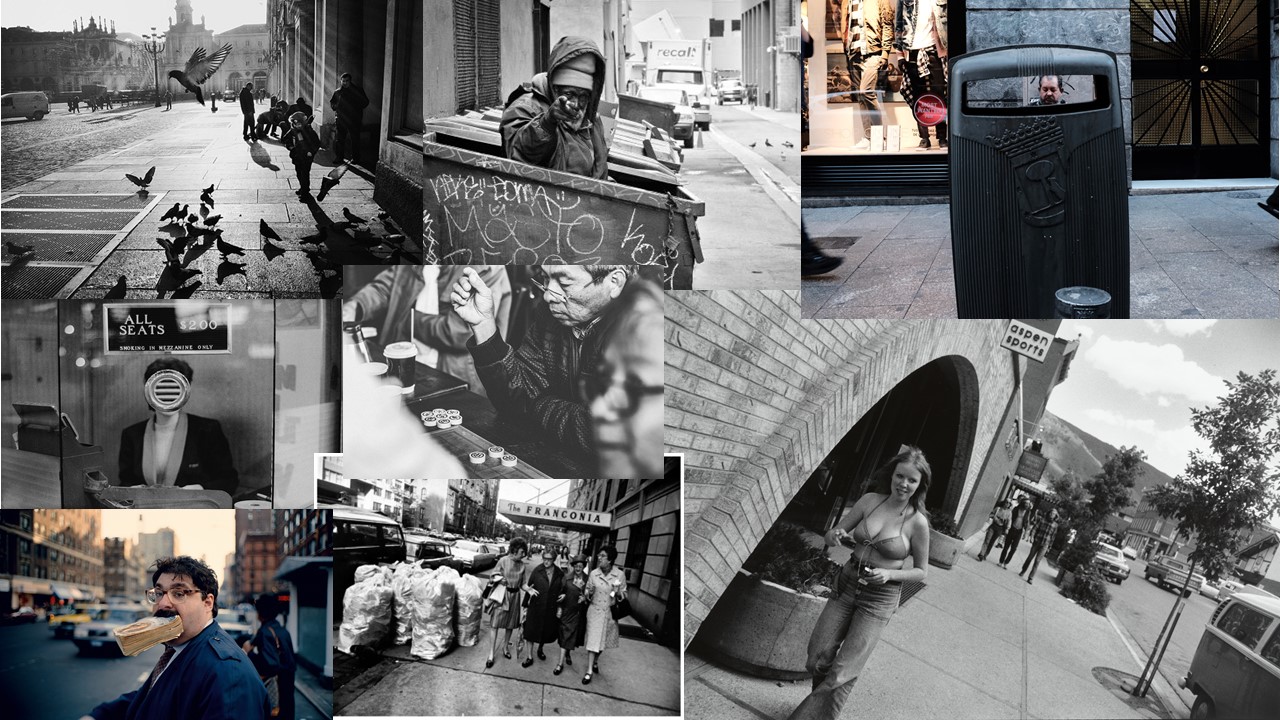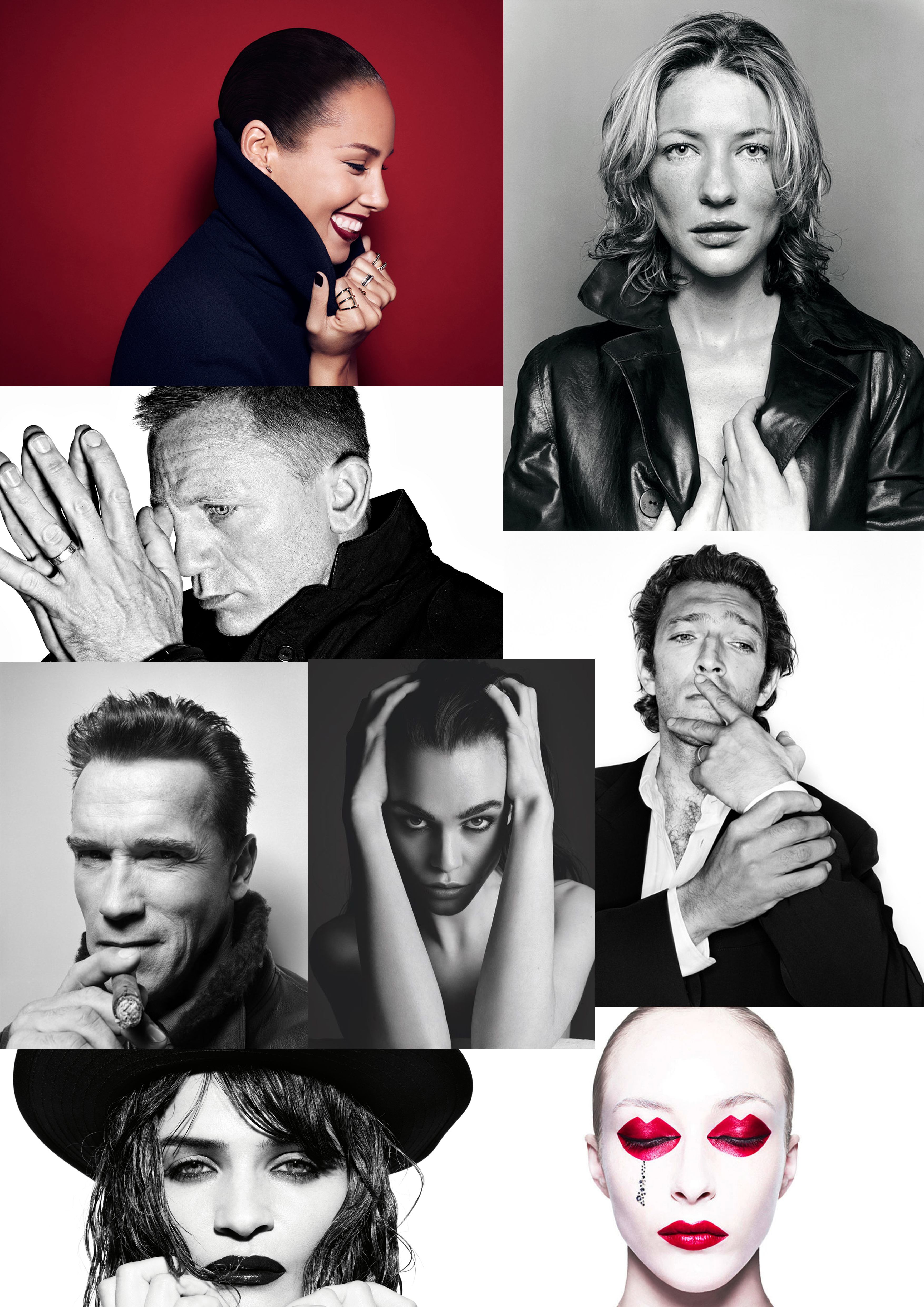Lots of photographers use studio lighting. Studio lighting is used to manipulate and add extra lighting that wouldn’t be there naturally to a shot. Having more light in a shot could be very useful as the photo without it could appear very dark and not how you want it to appear.
In my images you may see some use of chiaroscuro and Rembrandt lighting. This type of lighting occurs when one side of the face is lit up and the shadow from the nose and the cheek on the other side connect leaving a small triangle of light in between the cheek and the nose.
There are different types of studio lighting you can add to create different images. For example you can use one, two or three point lighting. One point lighting requires using one light, usually placed at an angle which will illuminate half of a persons face, creating contrast between the shadow and the infinity curve behind. Two point lighting uses two different lights. In portraiture this is normally used to remove shadows from the face completely. Though I have only really used one and two point lighting in my photo shoot there is also three point lighting which uses a third light. Often placed somewhere behind the person facing the back of their head to create a glow around their head to make it stand out more. Overall, the more points you have light coming from the less shadows will be cast on the person, allowing you to almost remove them completely or create different amounts of shadows in different parts of their face.
These are a selection of the images I have taken using one and two point studio lighting. A lot of the images turned out slightly out of focus due to me not focusing completely or they were over-exposed due to excessive light being used for the images.
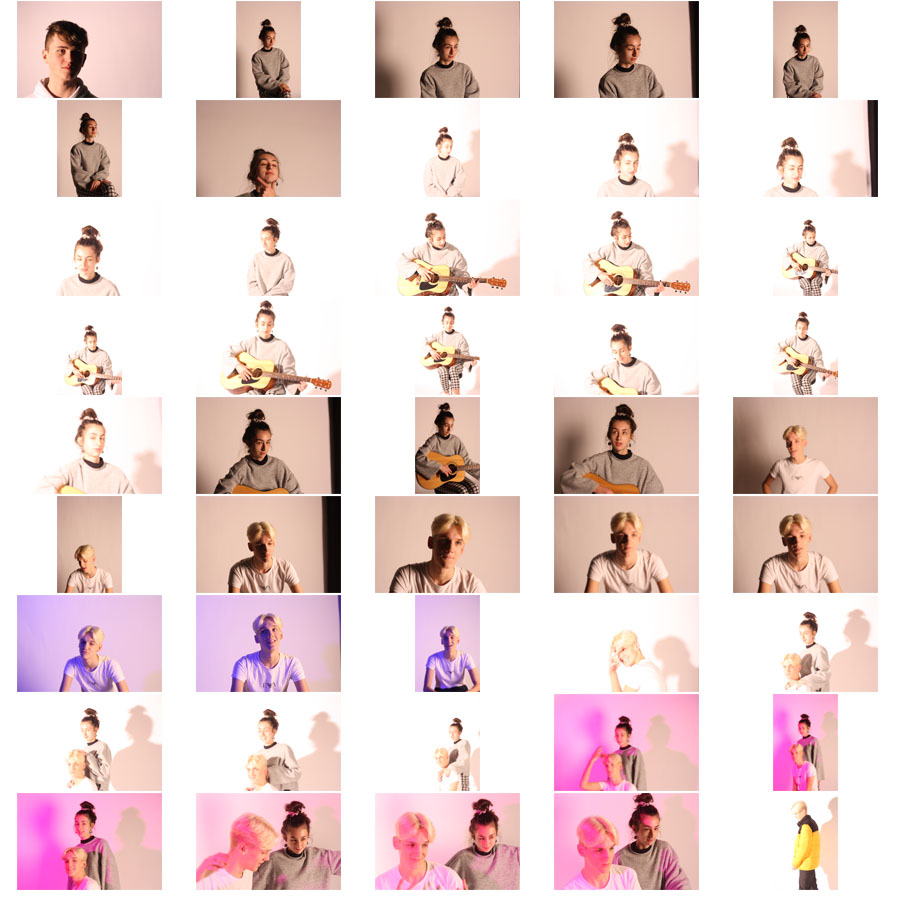
The images below are the best images I took using one and two point lighting. I have edited each image to crop, add exposure or add some more contrast between the bright and the dark parts in the images.

The images above and below used one point lighting. I have selected these images as some of the best taken due to the dark shadows that have been created due to using the artificial light on one side of their bodies.
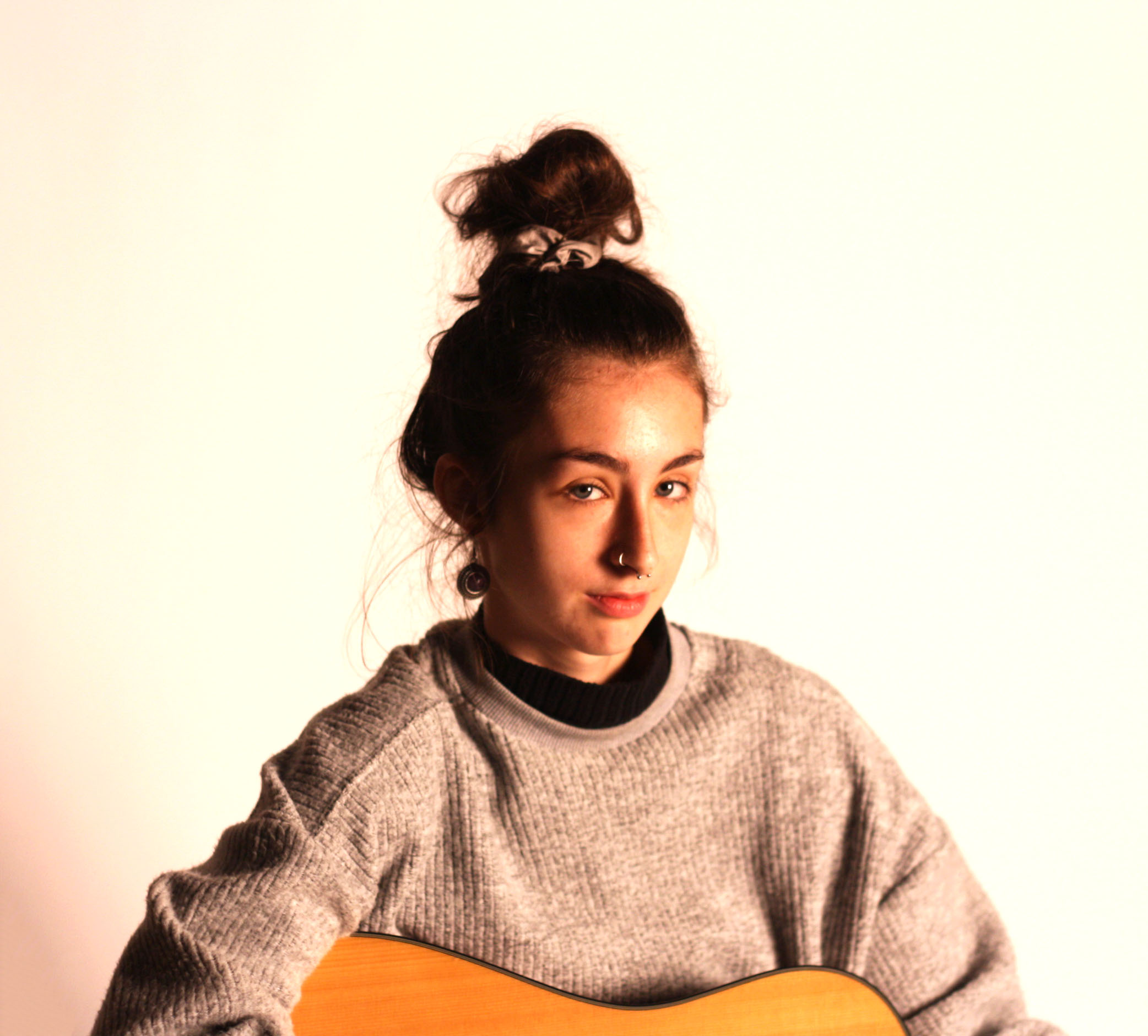
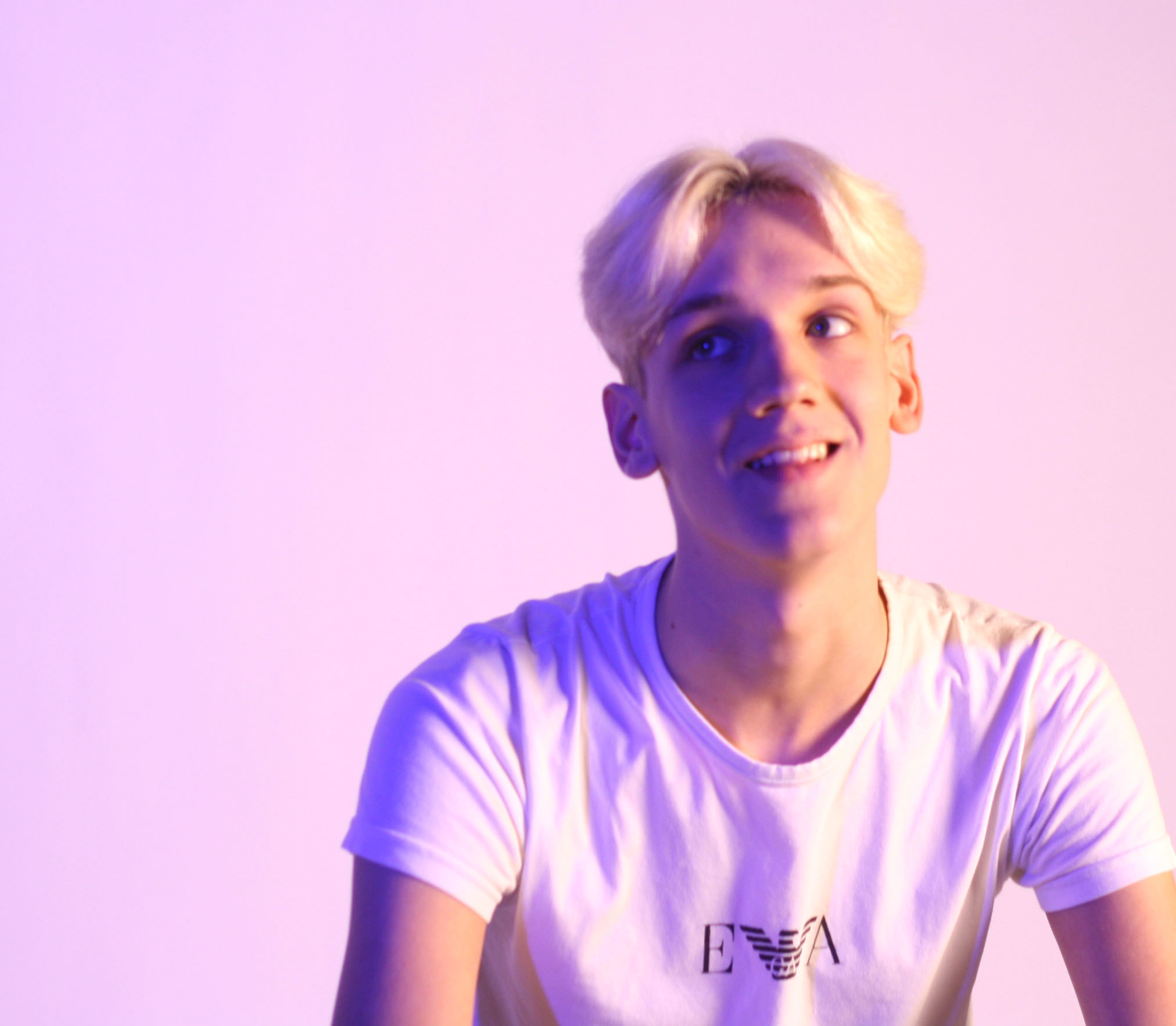
The image above uses two point lighting. In this image I have used gels and placed them in front of a spot light while keeping the soft box light appearing from the right. The use of a blue gel creates a dark blue shadow that illuminates his face and body. Without using the gel to make the the light darker on one side, his body would not appear to have many shadows.



